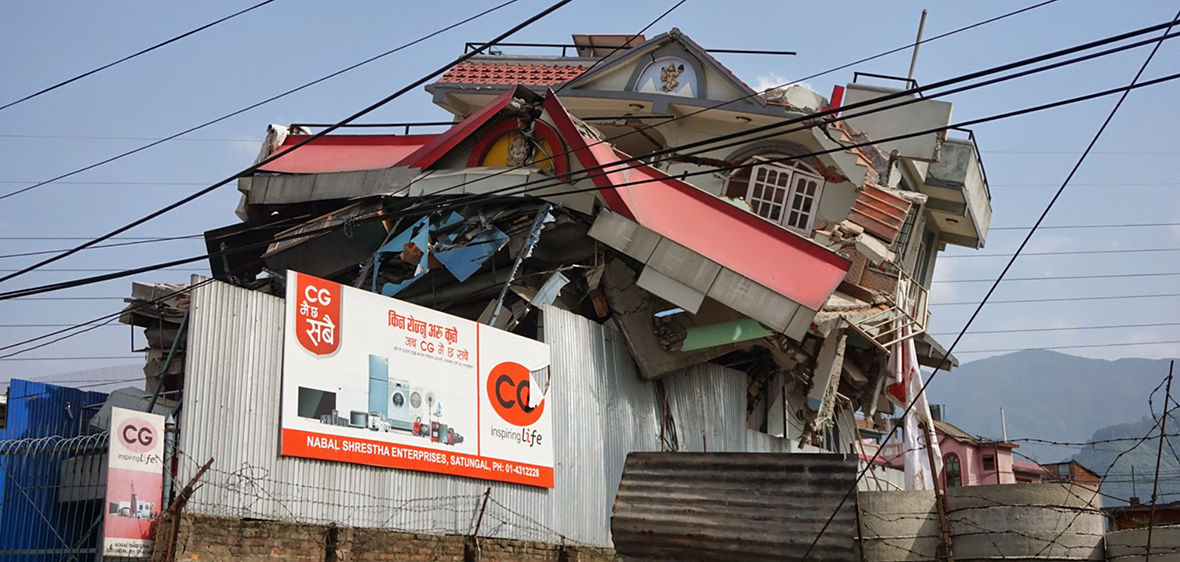After the deadly and devastating Nepal earthquake in 2015, two University of Nevada, Reno graduate students packed their backpacks and flew to the Himalayan Front to study the seismic effects of the violent ground motion. They will talk about their 10-days of field reconnaissance at 7 p.m. Monday, April 18 in the Joe Crowley Student Union Theater. The presentation is free and open to the public.
While in Nepal, the two College of Science geophysics students, Steve Angster and Ian Pierce, experienced the second damaging earthquake in the region; a magnitude 7.3 aftershock, allowing for a firsthand account of the effects of additional shaking.
Their presentation, with a backdrop of photos and video, will document the trip, showing a whirlwind tour of Himalayan tectonics, earthquake hazards as well as the damage that this earthquake brought to the country of Nepal and what can be learned from it.
The Nevada Seismological Laboratory sent the pair to Nepal, meeting their professor Steven Wesnousky in Kathmandu, to determine whether or not this earthquake ruptured up to the surface. They went looking for fresh breaks in the ground called a "fault scarp." They hoped to see a small hill along the fault, a portion of the fault responsible for building the Himalaya, denoting where a few meters of India slipped toward Nepal.
The team confirmed that there were no surface ruptures, which is unusual for such a large magnitude earthquake. Angster and Pierce took photos, studied structures and searched for fault lines.












